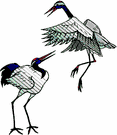Great conservation news for Boreal Forest!
I am delighted to send out some good news for a change and especially since this is a major conservation victory: Ontario, Canada government has comitted to "protect over 55 million acreas of Canada's Boreal Forest. Per Dr. Jeff Well's "Boreal Bird Blog" this number of acres of the Boreal Forest is vital breeding habitat for the following species of birds seen in Colorado:
3 million Swainson's Thrushes (many of those that migrate across Colorado's eastern plains are thought to be migrating to/from the Boreal Forest)
4.5 million White-throated Sparrows (I believe most if not all of this species that we see in Colorado breed in or near the Boreal Forest)
5 million Dark-eyed Juncos (most, maybe all, Oregon and Slate race that we see in winter in Colorado breed in the Boreal Forest)
4 million Magnolia Warblers (rare, but seen in Colorado)
3 million Palm Warblers (also rare, but seen in Colorado)
2 million Tennessee Warblers (not quite as rare as last two)
Additionally it is "the world's single-largest terrestrial carbon storehouse"
"Contains the majority of North America's fresh, unfrozen water"
"Hosts some of the planet's largest populations of wolves, grizzly bear and woodland caribou." (from news article at first link below)
Read more about this at
news article
Boreal Bird Blog
Montreal Gazette news story
SeEtta
Labels: BorealForest




































